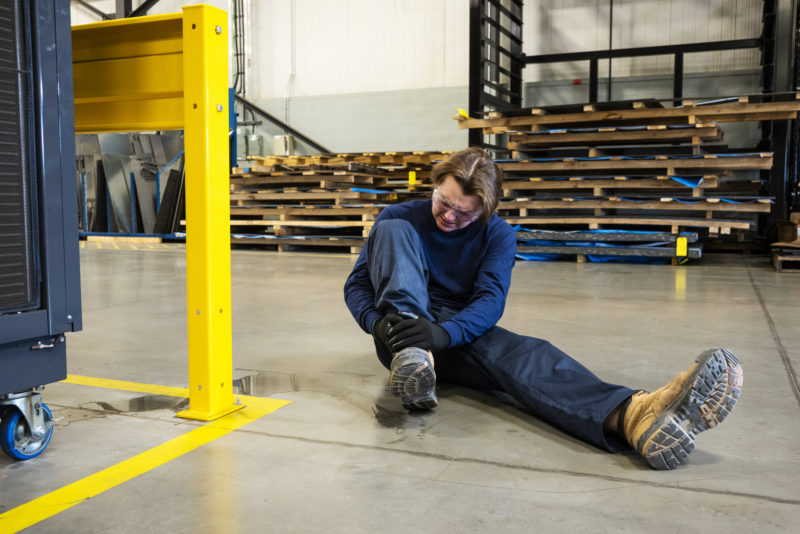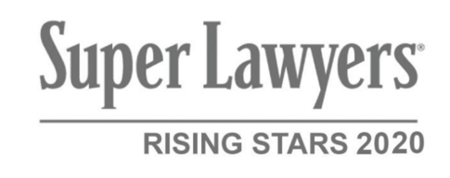The Differences Between Slip & Fall and Trip & Fall Accidents
Published in Premises Liability on January 11, 2021

Reading Time: 4 minutes
Falling is one of the most common types of accidents, causing tens of thousands of injuries every year. Falling accidents range from inconvenient and frustrating to dangerous and debilitating. But not all falling accidents are the same.
“Trip and fall” and “slip and fall” accidents arise from very different circumstances. They often result in distinct types of injuries. Unfortunately, people often mistakenly believe that these two types of accidents are the same. However, there are important distinctions between the two.
If you are seeking financial compensation from a falling injury, the manner in which you’ve fallen could have important legal implications. An experienced personal injury attorney can advise you about the significant differences between “slip” and “trip” injury cases. In this post, we’ll examine some of the distinctions between these two types of falling accidents.
Understanding a “Slip & Fall” Accident
Slip and fall accidents occur when the surface that someone is walking or standing on is unexpectedly slick. When a surface does not provide the expected amount of grip, the victim loses their balance and falls.
Typical examples of unexpectedly slippery surfaces include:
- Hardwood floors or tile floors that have recently been waxed or cleaned
- Surfaces that are unexpectedly wet (for instance, from an overflow, leak, or spill)
- Flooring surfaces on which condensation has gathered
- Carpeted floors with a low coefficient of friction
Some surfaces and floors are reasonably slick. For instance, the surfaces of ice rinks or roller-skating rinks are likely to be slick. A reasonable person would understand and expect that these surfaces will offer lower traction for standing or walking.
However, slip and fall injuries occur when people stand or walk on surfaces that are unreasonably slippery. When a surface is unpredictably slick, the victim’s feet usually slide out from under them. This causes them to lose their balance and fall.
Slip and fall accidents almost always result in the victim’s feet sliding forward unexpectedly. Next, the rest of their body falls backward uncontrollably, landing on the hard surface below.
Common Slip & Fall Injuries
Because this type of falling accident typically results in the victim falling backward, certain injuries are more likely. Some of these common injuries can result in long-term and debilitating consequences.
Some of the most common slip and fall injuries include:
- Ankle Sprain: When the victim’s foot moves forward along the slick surface, his or her leg can become misaligned. This puts pressure on the ankle and the surrounding soft tissue. Tendons, bones, ligaments, and muscles surrounding the ankle joint can suffer damage as the result of a slip and fall accident. This may prevent the victim from walking and require weeks or months of recovery.
- Shoulder Dislocation: This type of falling accident also often results in the victim’s shoulder becoming dislocated. When the victim slips, they may instinctively try to break their fall with their hands. This can cause their shoulder joint to suffer the force of the fall and become dislocated. Shoulder dislocations often require surgery and entail a long recovery period.
- Brain Injury: When a slip and fall victim fails to break their fall, they sometimes hit their head on the surface below. This can cause a traumatic brain injury. Brain injuries are incredibly serious. They can result in long-term loss of cognitive function and other debilitating symptoms.
These are only a few of the possible injuries that victims suffer following slip and fall accidents. If you have been injured in a slip and fall accident because of someone else’s carelessness, speak to a personal injury attorney as soon as possible.
Understanding a Trip & Fall Accident
Trip and fall accidents usually occur when a person faces an unexpected object or obstruction in their path. The victim’s foot catches on the obstruction and they lose their balance.
Some examples of obstructions that cause trip and fall accidents include:
- Varying elevations of streets, curbs, and sidewalks
- Uneven stones or concrete on an outdoor walking path
- The thresholds between interior rooms
- Uneven interior flooring in a restaurant or business
- Items negligently left on the floor, like ropes, boxes, construction materials, brooms, or other objects
These accidents usually occur because the victim trips and is unable to bring his or her foot forward in time to keep from falling. The victim may not be aware of the unexpected obstruction or may simply have misjudged the height of the object in question.
Common Trip & Fall Injuries
Unlike slip and fall accidents, trip and falls often result in the victim falling forward. When the person’s foot is unable to move forward because of the obstruction, their center of mass falls in the direction in which they were previously walking.
Some of the most common injuries from trip and fall accidents include:
- Broken or Fractured Arm Bones: When people trip, they tend to put their arms out in an attempt to catch themselves. If they land on their arms, this can result in fractures or breaks in their limbs. Elderly individuals are at an increased risk of bone fractures and breaks.
- Abrasions, Cuts, and Lacerations: Because trip and fall victims tend to fall forward, they are more likely to suffer lacerations or abrasions. Victims may scrape their hands, elbows, knees, or head on any other objects that their body encounters as they fall forward. For instance, a victim who trips over a box may scrape their hand on a storage shelf as they try to stop themselves from falling.
- Broken Fingers: Usually, a person’s hands sustain the majority of the impact in a trip and fall accident. This happens because the victim instinctively tries to break their fall by stretching their hands out in front of them. Therefore, broken finger bones are a common outcome of trip and fall accidents.
Falling accidents can result in a range of injuries, some of which may be life-threatening.
If you have been injured in a falling accident because of another party’s negligence, speak with a skilled personal injury lawyer right away. You have the legal right to seek financial recovery for the costs associated with your injury.
For more information, call our law office at (617)-391-9001. Or if you would prefer to email us, then please visit our contact page.
Comments are closed.










